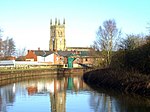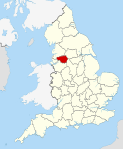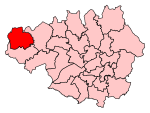The Association of Greater Manchester Authorities (AGMA) is the local government association for Greater Manchester, a metropolitan county in North West England. It was established in 1986 as a voluntary organisation to represent the ten district councils of Greater Manchester after the Greater Manchester County Council was abolished. AGMA develops policy, lobbies government and others, and runs a range of services designed to make strategic and tangible advances in the standard of living across Greater Manchester. Its Policy and Research Unit is based in Wigan,The Local Government Act 1985, which abolished the metropolitan county councils of England, delegated the powers of the Greater Manchester County Council to the ten bottom-tier metropolitan district councils but also recognised that some functions—such as public transport, fire and rescue, police, and waste disposal—required co-ordination at a strategic, metropolitan level. In this capacity, AGMA directs the strategic public and social services of Greater Manchester on behalf of the boroughs, such as the Greater Manchester County Record Office, which exhibits elements of the local history of Greater Manchester.
The Executive Board of AGMA is composed of representatives from Greater Manchester's ten metropolitan boroughs, and the Greater Manchester Integrated Transport Authority, the Greater Manchester Police Authority, the Greater Manchester Fire and Civil Defence Authority and the Greater Manchester Waste Disposal Authority, who are all members by subscription. The local authorities of Blackpool, Blackburn with Darwen, Cheshire East and Warrington are associate members with representation at AGMA debates and meetings, but are excluded from voting processes.AGMA makes representations on behalf of Greater Manchester to the government of the United Kingdom, the North West Development Agency, the European Union, business and other bodies, lobbying for investment and funding. AGMA actively pursued a formal and statutory government structure for Greater Manchester throughout the 2000s and made a successful bid to the UK's central government to constitute Greater Manchester as a Statutory City Region. Although not abolished, AGMA was effectively superseded by the Greater Manchester Combined Authority, the first authority of its kind in the United Kingdom, on 1 April 2011.






